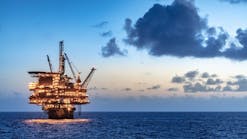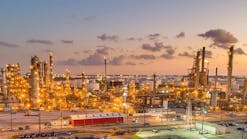Computer visualization methods are not a new concept in oil and gas exploration, but it is helpful to know how their efficiency is viewed from within an exploration organization.
Norsk Hydro ASA unit Norsk Hydro Oil & Energy, Oslo, has been using visualization systems for several years for seismic interpretation, reservoir simulation, and well planning. It sees potential in numerous other uses.
The company determined that visualization helps promote better understanding of complex seismic data and encourages collaborative work among interdisciplinary team members throughout projects.
Measurable gains
Norsk Hydro O&E during 1997-2002 tallied a return on investment of more than $86 million from its work with large-scale visualization systems and immersive displays.
This is compared with an investment of about $10 million in immersive visualization, said Rolf Helland, senior geophysicist, Norsk Hydro E&P Americas, Houston.
Norsk Hydro estimated that its per-well return on investment has reached as much as $25 million.
Immersive systems reduce the time required for well planning to 2 days from 2-3 weeks and the number of iterations in simple wells to two from five to seven, the company estimated.
Visualization timeline
Exploration scientists at Norsk Hydro first installed the walk-in, immersive environment known as the CAVE (Cave Automated Virtual Environment) at the company's office in Bergen, Norway, in 1997.
At that time, the company also began working with Christian Michelsen Research AS, a Norwegian contract research and development institute, to develop a software application for interactive well planning, real-time geosteering, and geophysical analysis.
The initial work yielded positive results, and by early 2001 Norsk Hydro had five visualization centers in Norway: three in Bergen, one in Oslo, and one in Stavanger.
This year it established a visualization center in Houston to support Gulf of Mexico exploration and production efforts.
Geoscientists at Norsk Hydro had worked with curved and flat wall systems. The company equipped the Houston center with a high-brightness, patented WorkWall from Fakespace Systems. It is a stereoscopic, digital flat-wall system that generates images 8 ft by 18 ft that can be viewed in ambient daylight (5,000 lumens per projector) rather than the darkened rooms most systems require.
The system is rear-projected so the user's shadow doesn't cover the image, and Norsk Hydro added video-audio conferencing equipment to further enhance collaborative work.
The company
As many OGJ readers are aware, Norsk Hydro O&E is Norway's second largest oil producer, with significant assets in the North Sea.
Not as many readers may be aware that it has total gross operated production of 1.3 million boe/d from 12 fields in 5 countries, including Norway. Its oil and energy division has 3,900 employees in offices in 58 countries.
The oil and energy unit found that immersive visualization systems allow teams to view and manipulate seismic data simultaneously, including geophysicists, well-design and drilling engineers, geologists, and review teams. They obtained results that included higher accuracy in decisionmaking and improved error recovery time.
Norsk Hydro recently started using immersive visualization technology for other business units, including its metals division. It expects continued expansion throughout the company, Helland said.
The oil and energy unit has identified other potential uses such as virtual geology, marine operations, rig design, gas exploration simulation, and production simulation.
Other developments
While advancing its own visualization agenda, Norsk Hydro also helped fund a large-scale, patented RAVE (Reconfigurable Advanced Visualization Environment) system at the Norwegian University of Science and Technology.
The system has 8 ft by 7.5 ft modules that can be configured in flat wall, immersive room, or angled theater-like groupings. Modules can also be detached for use as independent displays.
This venture is designed to encourage the study of immersive visualization for oil and gas exploration, and students who work with the system provide a resource of experienced visualization scientists for Norsk Hydro.
In the future the company hopes to use sound, haptics (display of a surface the user can touch and feel), and force feedback to further enhance users' sense of presence and understanding of such complex data.

